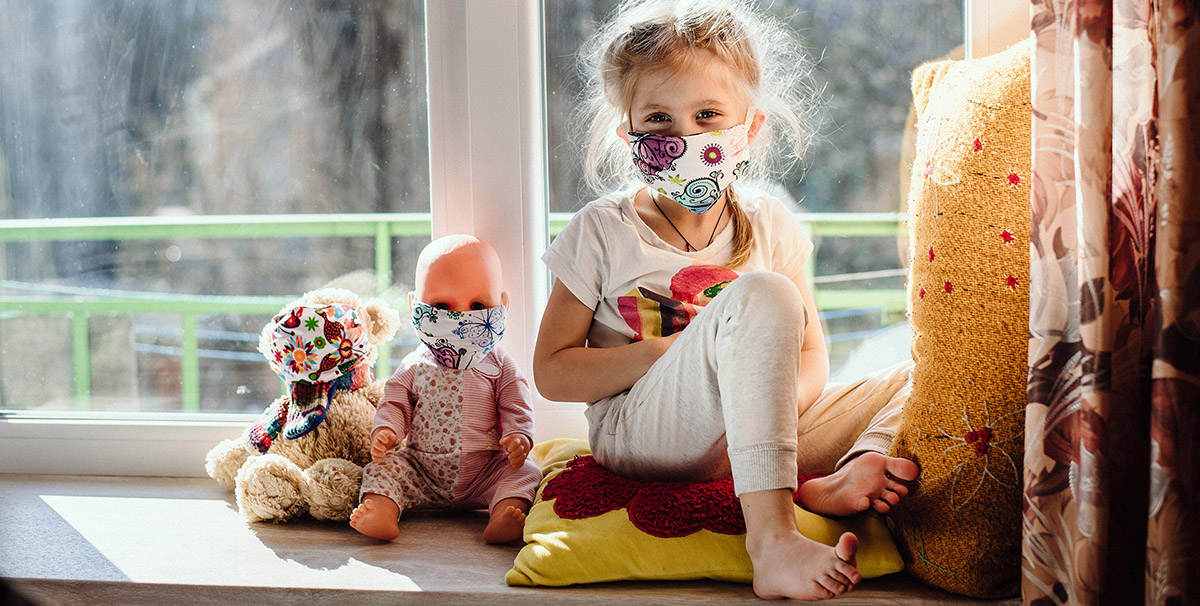Tips for Masking Kids Safely & Effectively
By Kristy Warren
This year’s back-to-school season is unlike any other as our community continues to face the challenges of Coronavirus COVID-19. Because students are required to wear face masks in school and during school-related activities, we realize parents may have questions about how to do that effectively, particularly with young children. Read on for tips on how to mask your children safely and effectively by age group.
WHY MASKING IS IMPORTANT
One of the things that makes COVID-19 so challenging is how easily it spreads. People can spread the virus before they realize they are sick. COVID-19 has a long incubation period, which means people can shed it before they show symptoms or in the case of asymptomatic carriers, without showing symptoms. This is especially true of children who may have mild symptoms that are easily missed. COVID-19 spreads mainly through droplets created when we speak, laugh, sneeze, cough, and breathe. Masks play an important role in keeping our community safe by reducing the likelihood of those droplets reaching the air and infecting others.
As a result, the Centers for Disease Control (CDC), healthcare workers, and the Laurel Health Centers all recommend that everyone over the age of two wear a mask in public settings and remain socially distanced from those who do not live in their household full-time (i.e., six feet apart from anyone who does not live in their home on a daily basis).
WHEN YOUR CHILDREN SHOULD MASK
Everyone over the age of two should currently mask when in public settings like school, stores, supermarkets, restaurants, and doctors' offices. Be sure the mask is a snug but comfortable fit and covers both their nose and mouth.
Once the mask is on, avoid touching it with your hands, and make sure to wash the mask after each use or dispose of single-use masks in a sealed trashcan.
Remember, do not mask infants or toddlers under the age of two as their inability to remove the mask themselves or fully communicate can present choking / suffocation hazards.

In keeping with the CDC recommendation, the Laurel Health Centers will not be providing medical notes to excuse students, visitors, or faculty from wearing masks at school. Families in need of masks can obtain them for free from the Tioga County Partnership for Community Health at 570-723-0520.
If your child has a severe sensory condition or developmental disability that makes routine masking difficult, our recommendation is that they participate in remote learning instead of in-person instruction and avoid situations or locations that require masking like crowded public areas whenever feasible. If you have additional concerns about your child’s ability to mask, please talk to your healthcare provider.
HOW TO HELP YOUR CHILD ADJUST
For many children, face masks are unfamiliar or associated only with a doctor’s office. They may have questions about why it's important to wear them in school and out in public. Here are some tips for talking about masks with your kids and getting them on board with this important safety measure:
- Help children understand why masks help and how to wear them
- Normalize masks through play and practice
- Give kids choices in design to get them involved
- Opt for masks that are easy to wash and sized for your child
- Make mask wearing more comfortable: if your kids are bothered by the ear loops, try adding buttons or clips to hair ties, head bands, ribbons, hats or glasses to loop onto instead
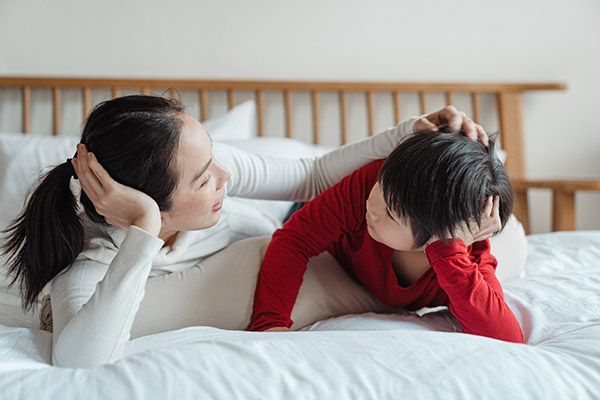
The first step is talk with your kids about masks. Help kids understand why people who appear healthy need to mask and how masking helps keep them and others safe and healthy. Sources like the CDC have helpful examples for explaining and illustrating how to properly mask and how masks work. Remember to keep explanations of COVID-19 age-appropriate to avoid overwhelming children.
For young children, use a simple message like “wearing a mask helps keep our family and others safe and healthy” and repeat this statement consistently.
For older children and teens, empower them with accurate information about how masks help us manage COVID-19 and correct misinformation with facts from official sources like the CDC, the PA Department of Health, and your healthcare provider.
MASKING TIPS FOR EVERY AGE
At all ages, it’s important for your child to feel heard and understood. Help them to talk through their feelings, frustrations, and fears then empathize with those feelings and provide encouragement. Here's an example: “You’re feeling frustrated about having to wear a mask all day? I understand how you’re feeling. It’s OK to feel sad or mad. Wearing a mask all day can be hard for me, too, but it helps to know we’re doing it to help others. Wearing a mask saves lives. It protects us, grandma and grandpa, and your friends. This won’t last forever, and the things we do now to help each other will be worth it.”
INFANTS & TODDLERS (UNDER AGE 2)
This age group should not yet wear masks, so focus instead on getting them used to seeing people wearing masks by wearing one yourself. This helps them develop a familiarity with masks and see them as part of your family's typical routine. This will help them more easily process people wearing them and help prepare them for when they are old enough to wear one themselves.
YOUNG CHILDREN (2-5 YEAR OLDS)
Young children learn through play, so make masks fun and playful by normalizing them as a positive, everyday part of life. Have them play doctor and practice putting a mask on their favorite stuffed animal or doll.
Get them comfortable with wearing a mask by wearing it during playtime and for short periods at home so they associate masks with their normal routine.
Try a mask craft where you and your child create mask designs or decorate a fabric mask with stickers. This can help foster a sense of involvement and positivity.
Opt for colorful or patterned masks to help them express themselves or allow them to choose a design featuring their favorite character or superhero.
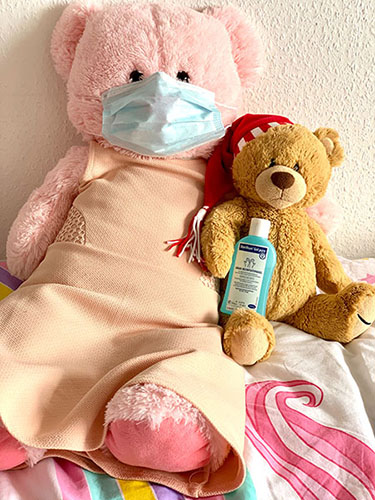
KIDS & PRE-TEENS (6-12 YEAR OLDS)
At this stage, it’s important for children to understand why they’re being asked to do something. While keeping the conversation simplified and age-appropriate, walk your child through what COVID-19 is and how masks help stop its spread. Your child may be eager to know what they can do to help with this situation.
Activate your child’s desire to “help out” or be involved by explaining that they are being a helper to others like their classmates and grandparents by wearing a mask, washing their hands, and keeping their distance from others in public. Encourage them to learn how to look for visual cues in your eyebrows or eyes to guess how you’re feeling (e.g., how you can "smile" with your eyes).
TEENAGERS & COLLEGE STUDENTS (13-21 YEAR OLDS)
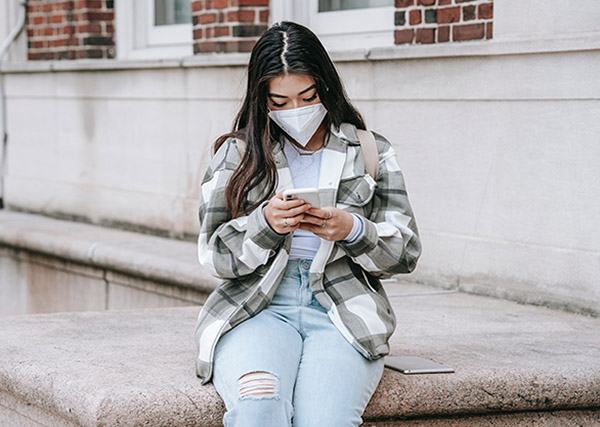
As any parent of a teenager or young college student already knows, kids this age are fiercely independent. They don’t like being told to do anything, and they frequently feel misunderstood. Start by validating their feelings whether it’s annoyance, confusion, or concern and let them feel heard. From there, reiterate that everyone is in the same boat. Discuss why it's important for everyone to wear a mask for this safety measure to be effective, especially in asymptomatic patients.
It may help to remind them that this safety measure, when followed by the full community, will allow favorite stores, restaurants, and salons to stay safely open and socially distanced.
Take care to clear up any misunderstandings or misconceptions they may have picked up from social media or friends like “COVID-19 isn’t serious for kids my age” or “masks don’t really help.” Share that masks have been clinically proven to reduce transmission when worn correctly over the nose and mouth, and help kids understand that COVID-19 can affect anyone. While COVID-19 is less likely to cause severe symptoms or death in children without an underlying health condition, the risk is still there; COVID-19 has severely sickened and killed children.
COVID-19 & VAPING
New research indicates that youth who use e-cigarettes or vape in combination with traditional cigarettes are five to seven times more likely to contract and experience severe complications from Coronavirus COVID-19.
Unfortunately, e-cigarette use has grown dramatically over the past few years. This puts a significant subset of the teen and college demographic at higher risk for COVID-19 than their non-smoking peers.
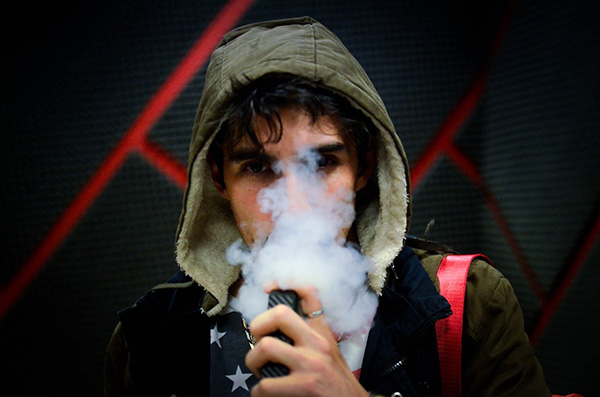
Have questions or concerns about how to keep your child safe throughout the school year? The Laurel Health Centers are here for you. Our expert pediatric team is dedicated to caring for all of your family's health needs throughout the pandemic and beyond. For more information about preventing COVID-19 and other health / wellness tips, stay tuned to our news page on laurelhc.org or visit our COVID-19 resources page.
If you have questions about masking or need to make a pediatric appointment, don't wait: call Laurel Pediatrics at 570-724-7100 or the Laurel Health Centers at 1-833-LAURELHC (1-833-528-7354) today. Click here to see a full list of our locations.
